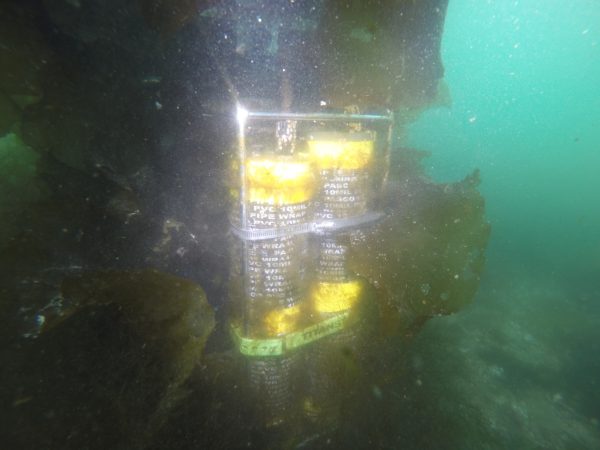New sensors continuously monitor Kachemak Bay's acidification
October 18, 2017
Lauren Frisch
907-474-5350
Scientists now have five new sensors that will continuously monitor ocean acidification
conditions in Alaska's Kachemak Bay.
The sensors, installed in September, allow researchers from University of Alaska Fairbanks,
Kachemak Bay Research Reserve and Kasitsna Bay Laboratory to collect a range of environmental
data.
A research team led by UAF College of Fisheries and Ocean Sciences professor Amanda
Kelley will use the data to study how ocean acidification affects different organisms
in shallow areas along the coast. Nearshore ecosystems protect the coastline and provide
important habitat for marine animals. Despite Alaska’s vast coastlines and vital fisheries,
little is known about how ocean acidification affects these ecosystems.
Ocean acidification is a long-term decrease in ocean pH caused by increasing concentrations
of carbon dioxide. The CFOS Ocean Acidification Research Center has monitored ocean
acidification in the open ocean since 2011. It only recently became possible to monitor
nearshore environments with the same precision.
“Nearshore ecosystems are complicated because they receive input from the open ocean
as well as glaciers, rivers, the seafloor and more,” Kelley said. “But they are also
very important, because many commercial fish and shellfish species in Alaska use the
nearshore as a nursery environment. Understanding how pH fluctuates in nearshore environments
will help us better understand what it might mean for species that are trying to grow
and develop in the bay.”
As ocean acidification intensifies, animals like crabs and mollusks that make shells
out of calcium carbonate may have difficulty growing or maintaining these shells.
Often, these animals are most vulnerable to changes in pH when they are developing.
Because nearshore environments serve as a nursery for many species, even small fluctuations
in pH may have a substantial impact.
But if animals are used to rapidly changing conditions in the nearshore, they might
actually be better adapted to changes in pH than animals living in more stable or
constant marine environments. Monitoring regular seasonal fluctuations in pH will
help Kelley’s team understand what kind of pH variability nearshore species can withstand.
Data collected by the sensors will show how Kachemak Bay pH conditions vary throughout
the seasons and how they are changing over time. By comparing trends in pH to biological
and ecosystem data, Kelley’s team hopes to understand how ocean acidification fits
into the broader context of ecosystem change in Kachemak Bay. UAF and the National
Oceanic and Atmospheric Administration's Habitat Blueprint funded the research.

The sensors will remain in the water for a year before being recovered to download data and check the batteries. A few times a year, the researchers will check that the sensors are consistent with actual water conditions. All of this can be done by scuba divers in small boats.
“It’s a low-maintenance program,” Kelley said. “Yet the ability to collect continuous data from five sensors in the same bay is groundbreaking for Alaska. We don’t have this comprehensive a data set anywhere in the state.”
Eventually, the researchers hope to expand the program to other parts of coastal Alaska.
This research will benefit people living near Kachemak Bay who rely on the bay as a source of food, said Angela Doroff, a research coordinator at the Kachemak Bay National Estuarine Research Reserve. Residents of Kachemak Bay are engaged in coastal issues and want to have a better understanding of what’s going on in their backyard, she said.


